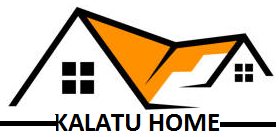When faced with suspected clogged air ducts, it’s advisable to seek professional HVAC assistance. A qualified technician can inspect the ductwork, locate any blockages, and clean the system thoroughly to restore proper airflow and maintain indoor air quality. Regular maintenance and cleaning of air ducts can prevent potential issues and ensure the efficient operation of your HVAC system.
These signs include;
Limited Airflow: One of the primary indicators of clogged air ducts is reduced airflow from vents. If you notice weak airflow coming from the vents despite the system running, it could suggest blockages in the ductwork.
Uneven Heating or Cooling: When certain rooms in your house are significantly warmer or cooler than others, it might signal duct blockages. Restricted airflow due to clogs can hinder the proper distribution of heated or cooled air, leading to inconsistent temperatures throughout your home.
Increased Energy Bills: Clogged air ducts force your HVAC system to work harder to maintain the desired temperature. This inefficiency can result in increased energy consumption and higher utility bills as the system struggles to push air through the blockages.
Unusual Noises: Unusual sounds like rattling, whistling, or banging coming from the ductwork could indicate debris or blockages obstructing the airflow. These noises often occur when the air tries to pass through the barriers in the ducts.
Dust Buildup: Excessive dust accumulating around the vents or on furniture despite regular cleaning might be a sign of clogged air ducts. When airflow is restricted due to blockages, dust particles can settle around the vents and get pushed into your living spaces.
Mold or Musty Odors: Duct blockages can create moisture buildup within the system, leading to mold or mildew growth. If you notice musty odors when the HVAC system is running, it could be a sign of mold growth in the ductwork, which poses health risks.
Visible Debris in Vents: If you can visually inspect your vents and notice debris like dirt, dust, pet hair, or even small objects, it strongly indicates blockages within the ducts. Accumulated debris restricts airflow and reduces the system’s efficiency.
Frequent HVAC Repairs: Continuous issues with your HVAC system, such as breakdowns, frozen coils, or malfunctions, can be caused by clogged air ducts. The strain on the system due to restricted airflow can lead to frequent breakdowns or component failures.
Allergy or Respiratory Issues: Poor indoor air quality caused by clogged ducts can exacerbate allergies or respiratory problems for occupants. Dust, pollen, and other contaminants trapped in the ducts can circulate throughout your home, causing discomfort for those sensitive to such particles.
Excessive Dust: If you notice a buildup of dust around the vents or on surfaces despite regular cleaning, it could be a sign that your ducts are clogged. When the ducts are obstructed, dust and debris accumulate and circulate throughout your home whenever the HVAC system runs.
Poor Airflow: One of the primary indications of clogged air ducts is reduced airflow from your vents. If you notice that certain rooms are not receiving adequate airflow despite the system running, it could signal a blockage in the ductwork.
Final Thoughts
When you suspect clogged air ducts, it’s advisable to have a professional HVAC technician inspect and clean the ductwork. Regular maintenance can prevent these issues and ensure your HVAC system operates efficiently, promoting better air quality and lower energy costs.

